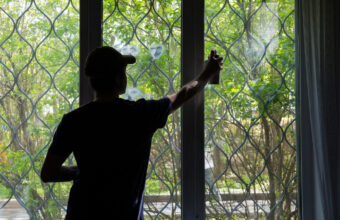When it comes to managing heat gain and enhancing comfort in your space, choosing the right window film can make all the difference. With various options available, selecting the best window film for heat control requires careful consideration. Let’s explore some of the top contenders in the realm of window films and uncover the optimal solution for keeping your interiors cool and comfortable.
- Ceramic Window Film – Ceramic window film is renowned for its superior heat-rejecting properties and clarity. This advanced film features ceramic nanoparticles embedded in the film’s layers, allowing it to block a significant portion of infrared heat while maintaining excellent visibility and optical clarity. By reducing heat gain through windows, ceramic window film helps to create a more comfortable indoor environment while minimizing reliance on air conditioning systems.
- Spectrally Selective Window Film – Spectrally selective window film is engineered to selectively block certain wavelengths of the solar spectrum, including infrared radiation responsible for heat transfer while allowing visible light to pass through. This selective filtration helps to keep interiors cooler and more comfortable without compromising natural light or outdoor views. Spectrally selective window film offers a balance of heat control, energy efficiency, and aesthetic appeal, making it a popular choice for residential and commercial applications.
- Low-E (Low Emissivity) Window Film – Low-E window film is designed to enhance insulation and reduce heat transfer through windows by reflecting infrared radiation into the interior space. This innovative film helps to maintain consistent indoor temperatures year-round, keeping interiors warmer in winter and cooler in summer. By improving thermal efficiency, low-E window film contributes to energy savings and enhanced comfort, making it an excellent option for climates with extreme temperature fluctuations.
- Dyed Window Film – Dyed window film is an affordable option for heat control that features a dyed layer designed to absorb solar heat and reduce glare. While dyed window film offers some degree of heat reduction, it may not be as effective as ceramic or spectrally selective films in blocking infrared heat. Dyed window film can still provide a noticeable improvement in comfort and energy efficiency, particularly in moderate climates with less intense sunlight.
- Metalized Window Film – Metalized window film incorporates metal layers that reflect solar heat away from the building, helping to keep interiors cooler and more comfortable. While metalized window film offers excellent heat rejection properties, it may interfere with electronic signals such as Wi-Fi or cellular reception. The metallic appearance of this film may not appeal to all homeowners or align with certain architectural styles.
The best window film for heat control depends on factors such as performance requirements, aesthetic preferences, and budget considerations. Whether you opt for ceramic, spectrally selective, low-E, dyed, or metalized window film, investing in high-quality window tinting can help to enhance comfort, reduce energy consumption, and create a more sustainable and comfortable living environment. With professional installation and expert guidance, you can enjoy the benefits of improved heat control and energy efficiency while maintaining the beauty and functionality of your windows.






